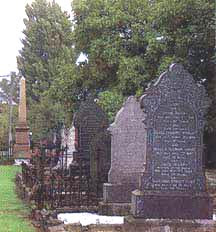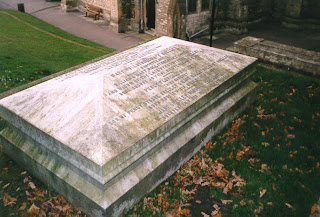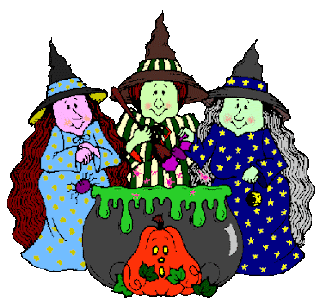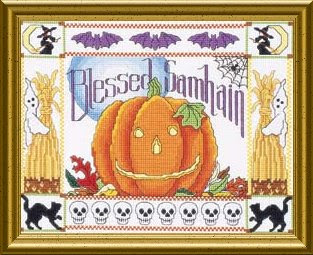.bmp)
Dracula Dip
2 cups sour cream
1 packet of dry tomato-vegetable soup mix
1. Put dry soup mix and sour cream into a bowl. Stir until soup mix is moist. Put mixture into refrigerator for at least 2 hours. Serve with chips or vegetables.
Halloween Cheeseballs
2 cups Shredded mozzerella cheese,1/4 cup Solid pack pumpkin,1/4 cup Pineapple preserves,1/4 teaspoon Ground allspice,1/4 teaspoon Ground nutmeg,1 large Pretzel rod -- broken in half,1/2 pkg cream cheese,Dark rye bread,Red pepper,Black olive slices,Parsley sprigs.
1. Beat cheeses, pumpkin, preserves and spices in a medium bowl until smooth.
2. Cover refrigerate 2-3 hours until cheese is firm enough to shape.
3. Shape mixture into round pumpkin, place on serving plate.
4. Using a knife, score vertical lines down pumpkin. Place pretzel rod in top for stem.
5. Cut bread into triangles for eyes, cut red pepper into triangle for nose, and cut olives in half to make the mouth.
6. Surround with parsley.
Halloween Cup Cakes
1 pk Yellow cake mix,1 1/2 teasoons Pumpkin pie spice,1 cup Buttermilk,1 cup Pumpkin,2 Eggs,
Frosting,3 tablespoons Margarine, or butter softened,3 tablespoons Pumpkin,2 cups sugar,1/2 teaspoon Milk,1/2 teaspoon Vanilla,Black licorice twists,Small green gumdrops.
1. Using 24 muffin cups with paper baking cups.
2. In a large bowl, combine all cupcake ingredients at until moistened
3. Beat 2 mintues scraping down sides of bowl.
4. Pour batter into prepared muffin cups.
5. Bake at 200 degrees celsius for 20 to 25 minutes or until toothpick inserted is removed clean.
6. Cool completely.
7. In a small bowl, beat margarine or butter and 3 tablespoons of pumpkin until well blended. Gradually add 1 cup of the sugar, beat until smooth.
8. Add milk and vanilla. Gradually add remaining cup of sugar, beat for another 2 minutes.
9. Spread on tops of cupcakes.
10. Cut down 1 side to open licorice twist into triangular pieces for eyes and noses. Cut jagged curved pieces for mouths.
11. Arrange on top of cupcakes for faces. Slice gumdrops in half attach to head for stems.
Witches Brew Cider
4 Cups Apple Cider
2 Cans Frozen Lemonade Concentrate, Thawed
2 Cups Water
8 Cinnamon Sticks
Lemon Slices
1. Into a large saucepan, pour cider, lemonade concentrate, and water; stir.
2. Over medium heat, bring cider to a simmer.
3. Pour into cups.
4. Place a cinnamon stick and a lemon slice in each cup.
Halloween Cake - Barmbrack, Bairin breac
from Ireland
Traditionally baked with a gold ring inside; whoever gets the ring will be married within the year. The cake is made in two stages.
First stage
Mix together:1 cup of sultanas -->( dried seedless white grapes),
1 cup of raisins,3/4 cup brown sugar,1 cup cold tea,
Cover these ingredients and leave to soak overnight.
Stage Two
Prepare these ingredients:1 1/2 cups of flour,1 level teaspoon of baking powder,1 egg beaten,1 teaspoon mixed spice.
1. Add the four, baking powder, and spice to soaked fruit mixture.
2. Mix in the beaten egg.
3. Spoon into a well greased loaf tin and bake for 1 1/2 hours at 300 degrees
4. When cool brush the top with warmed honey for a glazed surface.

 Hi to all on this Glorious Halloween night, Also known as All Halo's eve, Day of the Dead, All Souls Day, Samhain, and the Celtic New Year. If the pumpkin is the obvious vegetable representing Halloween then the fruit is the magical apple. It was believed that this festival of the dead was once called the Festival of the Apples. In the story of King Arthur, upon death he was taken to Avalon. The Isle if the Apples to help wandering souls complete their journey to their own Avalon. Here are some words for apple magic on All Halow's Eve.
Hi to all on this Glorious Halloween night, Also known as All Halo's eve, Day of the Dead, All Souls Day, Samhain, and the Celtic New Year. If the pumpkin is the obvious vegetable representing Halloween then the fruit is the magical apple. It was believed that this festival of the dead was once called the Festival of the Apples. In the story of King Arthur, upon death he was taken to Avalon. The Isle if the Apples to help wandering souls complete their journey to their own Avalon. Here are some words for apple magic on All Halow's Eve.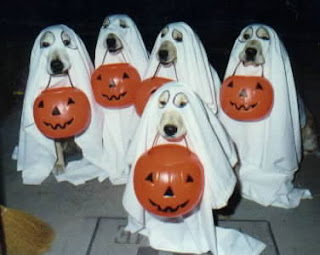










.jpg)
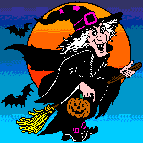
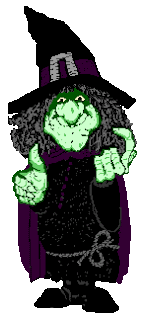




.bmp)
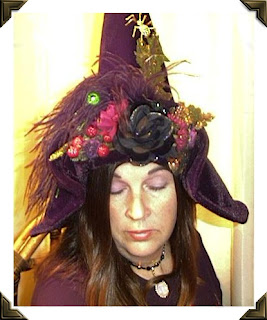.jpg)





